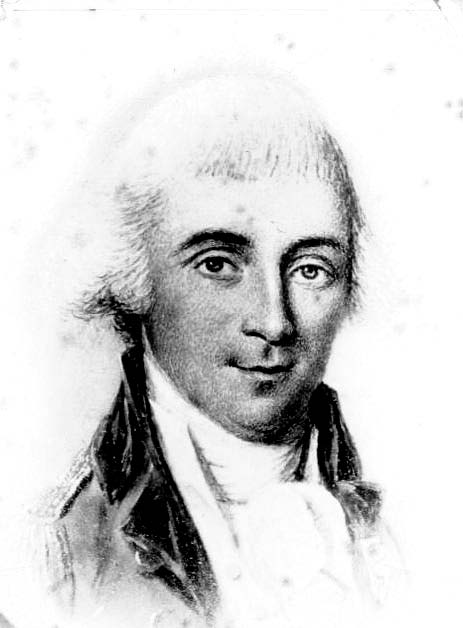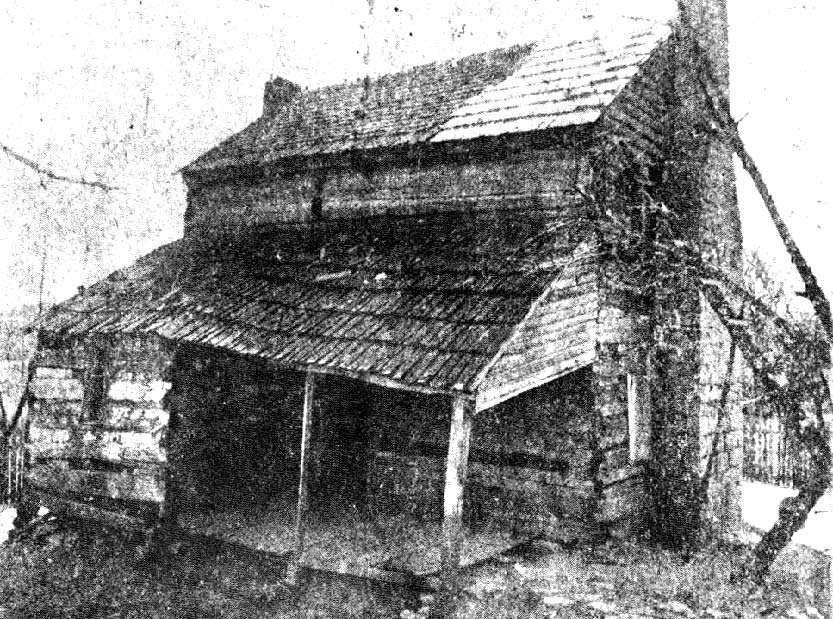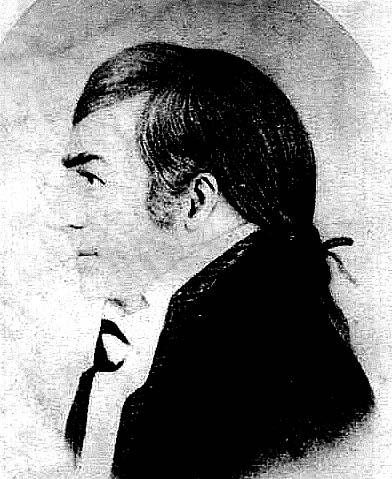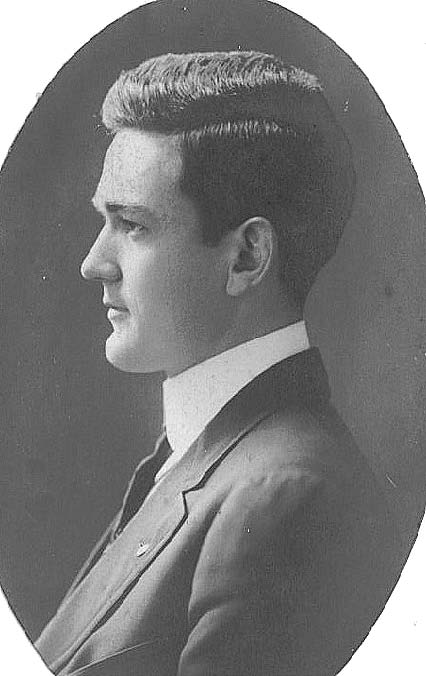Rogers FamilyThe Descent of John Rogers, from the British Museum (17)Alfred the Great Edward Edward I Edgar the Peaceful Ethelred II Edmund Ironsides Edward the Exile Margaret, Malcolm III of Scotland Mitilda. Henry I Maud, Geoffrey Plantagenet Henry II, 11th from Charlemange Richard Coeur de Lion John Henry III Edward II Princess Elizabeth m. Earl of Herford Lady Margaret de Bohun m. Hugh of Devon Sir Philip de Courtenay m Anne Wake Sir John de Courtenay, m Joan Champerdowne, Lady Chudleigh Sir Philip de Courtenay m. Elizabeth, daughter of Lord Hungerford Katherine de Courtenay, m. Thomas Rogers of Bradford John Rogers of Derided m. Margery Wyatt John Rogers the Martyr Rev. John Rogers
Bernard Rogers Thomas Matthew Rogers John Rogers Giles Rogers John Rogers George Rogers Edmund Rogers John Thomas Rogers Joseph Underwood Rogers Lelia Rogers Dickinson |
Rev. John Rogersd. Feb14, 1555 (Burned at the Stake); m. 1536 Adriana de Weyden Rev. John Rogers was the first martyr in Queen Mary’s reign, and met death at Smithfield, Feb 14, 1555. When preaching from a high pulpit on the roadside, Bloody Mary passed on the palfrey, and seeing John Rogers, caused him to be arrested and sent to prison, where for two years he suffered greatly, not even being allowed to see his wife. Later the merciless Bishop Fardiner at the Divinity School in the Bodleian Library Building examined him, and he was sentenced to die at the stake. Seven thousand people followed Rogers to the spot and shouted for joy, but he stood firm. He had been chosen for his learning and abilities by Cardinal Wolsey, who founded Christ Church College, to be one of the first cannons, and later by Bishop Ridley to be one of the Divinity Lecturers of the Cathedral of St. Paul’s, London. He was also Prebendary of St. Paul’s Cathedral. A large tablet stands at Smithfield, near the place of his martyrdom. John Rogers’ name leads a list of 62 others, who, within two years also died for their faith. (21) Bernard Rogers m. in Scotland 1564 Thomas Matthew Rogers m. Miss MacMurdo John Rogers m. Worcester, England 1640 Lucy Iverson Giles Rogers m. In England 1672 Rachel Eastham Giles Rogers came to Virginia in 1670 with his own ships. His motto on his coat of arms was “Act Justly and Fear Not.” He patented 400 acres in New Kent County, April 18, 1670. He had brought 8 persons with him. He returned to England and married Rachael Eastham in 1672. In 1680 he returned to Virginia with his wife and his first three children (Giles Jr., Lucy, and Peter) and servants and materials for building. John, Rachael and Mary Anne were born in America (24) John Rogers b. born on a ship as it entered Chesapeake Bay in 1680; d. in 1768. m. Mary Byrd. John Rogers was not a member of the established church, thus he could not vote, nor hold office, nor acquire land by royal grant. There simply was no opportunity for advancement. He was not of the gentry. He married Mary Byrd in 1716. Mary was the daughter of Col. William Byrd I of Westover and the Byrd family had objected to the marriage and had disowned her, but she said she did not regret it even if she never saw any of her family again. She stayed with her sick mother until the mother died and then left with only the clothes on her back. She told her children and grandchildren who she was. It was passed down. She was born in 1682 and died in 1763 at the age of 81. Their 8th child was named “Byrd Rogers”(24) George Rogers b. June, 1721 d. Mar, 1802 (Caroline County, Va.) m. Dec 5, 1754 Frances Pollard, Daughter of Joseph Pollard & Priscilla Holmes) 9 children:
|
 |
|
| 3. Lucy Rogers m. Robert Farish 4. Edmund Rogers 5. Anne Rogers m. John Farish, 5 children 6. Frances Rogers m. John Underwood, 7 children 7. Thomas Rogers m. Mrs. Skiles, 1 child ----a. Mary Jane m. Rev A. C. Dickerson 8. Mary Byrd Rogers, m. Maj. Benjamin Alsop ----a. Sarah m. Stephen Crutchfield 9. Mildred Rogers m. Richard Harris ----1) Susan m. Gov. Breathitt --------1. Mary Mildred m. Dr. Sappington --------2. Edmund Pendleton Rogers
Edmund Rogers b. May 5,1762 (Caroline County, Va.) d. August 25,1843 (Barren County, KY) buried in Rogers family cemetery, Metcalf Co, KY; m. Jan 27, 1809 Mary Shirley b. Spotsylvania Co., VA, daughter of John W. Shirley, Jr and Francis Yates, d. July 23, 1836 in Barren Co., KY, buried in Rogers family cemetery, Metcalf County, KY.
He began business as a surveyor in the fall of 1783 with George Rogers Clark, his cousin, on the north side of the Ohio River, opposite Louisville. In the spring of 1784, his operations were changed to the military district of Kentucky, on the south side of the Green River. He made most of the surveys on the Little and Big Barren Rivers and their tributary streams. Muldraugh’s Ridge was the boundary of the settlements towards the southwest in Kentucky, when Mr. Rogers commenced surveying in the military district. He expanded and set the boundaries for most of the souther part of Kentucky. He is credited with naming “The Barrens” from which Barren County takes its name. (73) He settled on a tract of land, upon which he afterwards laid out the town of Edmonton (named for himself) in Barren County, in the year 1800. (20)The following is an advertisement promoting the proposed settlement of Edmonton, Ky.
|
Captain John Rogers and his brother Edmund made an agreement that whoever died first should return from the world of spirits and inform the other what was going on there. This agreement between the brothers was no joking matter. Edmund often said, late in life, that there could be no such things as visits from the spirits of the dead, or their holding intercourse with the living; for he said, if such a thing could be, “I know my brother John would have kept and fulfilled his promise.” Edmund discountenanced everything of a superstitious character. The motto which Edmund Rogers espoused throughout life, was “to do justice, love mercy and walk humbly before God.” He often repeated these words as containing man's whole duty. His last illness was of short duration. He was in his perfect mind to the last breath. About an hour before he expired he was seen to smile, and being asked what occasioned it, he said, "he was thinking of the vain efforts of three of the best physicians in the country, to save the life of an old man when his time had come." He died with perfect composure and without a struggle. Edmund Rogers married Mary Shirley in 1809. She died in 1836, leaving seven daughters and one son. In 1840 owing to his advanced age of 78, he broke up house keeping and moved with his single daughters to the house of his son, John T. Rogers, where he died on the 28th day of August 1843. His remains were taken to his own farm and buried by the side of his wife near Edmonton. Edmund Rogers was ever ready to lend a helping hand to the needy and deserving. He raised and educated his nephew, the honorable Joseph Rogers Underwood. (20) |
| Children of Edmund Rogers and Mary Shirley born in Barren
County, Kentucky (13) 1. Frances Underwood Rogers b. Jan 9, 1810, d. Sept 25, 1839 2. Mary Shirley Rogers b. Nov 10, 1811, d. Sept 12, 1841, m. Feb 27, 1827 Andrew Edward Trabue 3. John Thomas Rogers b. Jan 22, 1814, d. Apr 19, 1881, m. Oct 29, 1839 Olivia Lewis; buried in Rogers family cemetery, Metcalf, Co, KY 4. Ann Brown Rogers b. Dec 29, 1817, d. 1870 buried in Rogers family cemetery, Metcalf, Co, KY, m. Sept 6, 1836 Charles K. Winston 5. Henietta Sweringen Rogers b. Jan 20, 1820, d. 1875, m. John W. Beauchamp; buried in Rogers family cemetery, Metcalf, Co, KY; 6. Ellen Elizabeth Rogers b. July 16, 1822 d. Sept 28, 1859, m. Apr 15, 1845 Robinson P. Beauchamp; Rogers family cemetery, Metcalf, Co, KY 7. Edmonia Thomas Rogers b. July 2, 1825, d. Apr 27, 1882; buried in Rogers family cemetery, Metcalf, Co, KY; 8. Mildred Lavinia Rogers b. Oct 24, 1828, d. Aug 20, 1906, m. Nov 1, 1848 Joseph F. Ray; buried in Rogers family cemetery, Metcalf, Co, KY; |
John Thomas Rogersb. Jan 22, 1814 d. April 19,1881, m. Oct 29,1839 Olivia Lewis; Kate Ganter’s archives contain a copy of a letter that John T. Rogers sent to his wife, Olivia, from New Orleans in April of 1846. He had taken his tobacco by flat boat down the Barren River, the Ohio and the Mississippi to be sold in New Orleans. Olivia’s father, Joseph Lewis would also make such trips. Joseph Lewis would bring back furniture for the family home, Spotswood on North Race Street in Glasgow, that had been built about 1790 by George Washington and presented together with 1,000 acres of land to Gen. Alexander E. Spotswood, grandson of one of the colonial governors of Virginia, for his bride, Betsy Washington Lewis, who was favorite niece of George Washington. 
Spotswood, the 2nd brick house in Glasgow, was a “traveler’s rest,’ so called because it was in the days of its earliest existence, a home away from home for anyone seeking shelter. It was one of the few accessible places for people to lodge who were traveling on the trails from Nashville to Louisville or Lexington, or going east to Washington. The house also has a cave or tunnel entrance, which is located in a wall in the basement. Gen. Joseph H. Lewis, CSA, bought the house in 1869 and lived there for nine years. (22) (23) 
“Oldest House in Barren County, Near the Historic Mounds”according to an old newspaper clipping around 1900. It probably stood near the juncture of Barren River and Peter’s Creek. Charles Boles thought that the house belonged to John Rogers, grandson of Edmund Rogers. Earlier, the place was probably a part of the land owned by General Joseph H. Lewis’ family. It stood where the vacation cabins are now located, behind the Barren River State Park Lodge. (73) |
Children of John Thomas and Olivia Lewis Rogers1. John Lewis Rogers b. in Barren Co, KY Sept 7, 1845, d. July 11, 1935 m.#1 Eugene Reed, April 1873; m.#2 Capitola Snyder; John Lewis Rogers was only 16 years old when he donned the Confederate uniform, made for him by his mother and sisters, and followed his Uncle, Col. Joseph E. Lewis to war. He enlisted in Company E, 6th Kentucky Infantry, and served with that company until after the battle of Shiloh when he was discharged. Some years later he migrated to Franklin, Simpson Co, Ky. where he lived to a ripe old age. He died July 11, 1935, the last confederate in Simpson County, and probably the last confederate who had enlisted from Barren County. (9) 2 children; 1) Arthur Read Rogers 2) Eugenia Byrd Rogers ----John Lewis Rogers and his sister, Annie E. Kilgore were excluded from membership in the Lucas Baptist----Church in 1860 for dancing. Another brother, Edmund P. Rogers was excluded, also, by letter on November ----25, 1867. (57) ----2. Evelyn Byrd Rogers v. July 28, 1864, d. November 19, 1954, m. June 22, 1909 Catlett Waddy Thompson; in 1903 C W. Thompson built and ran the Beula Vista Hotel at Sulfur Wells, Ky. The spring of smelly sulfur water was supposed to have healing qualities. Byrd Rogers Thompson is buried at Sulfur Wells. ----3. Edmund Pendleton Rogers b. April 16, 1856, d. 1936, m. Attelia Fowler and moved to San Luis Obispo, Calf. ------was sheriff and deputy clerk and recorder for the County 1) Jack Lewis Richardson. m. Guy _____;
Annie and Ed Kilgore built a house across the street from the Dickinson Family home on Washington Street in Glasgow that was referred to as the Kilgore House, and later as the Grey House. Mary Kilgore Gordon enlarged the house into three apartments to be occupied by Evelyn Kilgore and her two girls, Murray Kilgore and his three children, and Aunt Annie and Uncle Kilgore, and Mary and S.D. Gordon when they weren’t traveling. Jo.U later purchased this Kilgore house, and eventually willed it to his daughter, Leila Rogers Dickinson. Lelia willed it to Kate and Rogers. Kate Ganter and her family eventually lived here and it was part of the three “Dickinson house compound” that became the home of the Kate, Lewis, Rogers, and the Sam Dickinson families in the late 1940s and ‘50s. (14)
|
Joseph Underwood Rogers b. Oct 30, 1854 at “Beechland”, the home of his parents in south Barren County, near Barren River. d. October 3, 1936; m. Mar 19, 1878, Kate “Katie B” Buckner Trabue” b. Sept 28, 1858, d. July 4,1935; Joseph Underwood Rogers was named for his cousin, Judge Joseph Rogers Underwood who moved to Bowling Green and served in Congress for many years.(11) |
 “Beechmont” on the Nashville/ Scottsville Road “Beechmont” on the Nashville/ Scottsville Road As a young man he moved to Glasgow, where he became a partner in Rogers’ and Snoddy’s Drug Store. Later this store became the Leech and Davis Drug Store. He afterwards owned a grocery store on the Glasgow Square; An advertisement in the Glasgow Paper Jo U. Rogers and partner George Snoddy in Rogers & Snoddy, wholesale and retail dealers in paint, oils, and varnishes, knives and razors; prescriptions carefully filled with Pure Medicines… Terms Cash. The first telephone in Glasgow was in Rogers and Snoddy’s drugstore, and the store also housed the first telegraph office in Glasgow. (45) After Jo U retired from the drug store business, he opened a grocery store under the name of Rogers and Hatcher and ran it for five years. He was head of the Barren County National Farm Loan Association, and during the war, was head of the Barren County Draft Office. Jo U. was also part owner and manager of the Satterfield Farm south of Glasgow in Allen County. According to an article in the Glasgow newspaper, on June 6, 1916 Jo U. Rogers was one of the eight founding members of the Glasgow Library. Each of the founding members donated a book and eventually the library had 17 books and kept its books in the window of Orr’s Drug Store. In 1918 the library moved in with the Red Cross in a room over the Glasgow Republican Newspaper. Joseph (Jo U) Underwood Rogers married Kate Buckner Trabue, daughter of Dr. Benjamin F. and Lelia Anderson Trabue. They lived most of their married life at the old Trabue homestead on West Main Street, until they moved to the home of their daughter, Lelia Dickinson. They had moved to Lelia’s home because of the blindness of Kate Rogers and the death of Lelia’s husband, Bartlett. Kate was blind for 30 years before her death, but Jo U became her eyes. He conducted his business at home whenever possible, so he would never be far from her side. He would read to her for hours, walked her to Sunday School, church and prayer meeting every week at the Baptist Church, rain or shine, walked her to the homes of family and friends often, and was always a most devoted husband. With Jo U’s patient coaching, she even learned many chapters of the Bible from memory to tell the grandchildren. Jo U Rogers received a 50-year pin as a deacon in the Baptist Church. (11) When B.F. Trabue died in 1905, his daughter, Kate bought the interest of her father’s siblings in the old Home Place, and Kate and Jo.U. continued to live there until 1913. Kate ’s brothers, Lewis and Ben Rogers, lived in the old Home Place until it was sold, about 1920 and torn down to make room for the Planters Tobacco Warehouse. Joseph Underwood Rogers & Kate Buckner Trabue
1) Alice B. Rogers b. April 9,1917 d. May 18, 1983 2) Lou Russell Rogers b. September 6, 1924, d. July 27, 1997; 3) John Lewis Rogers b. 1921 d. February 14, 1983; m. Charlotte Myers
|
Lelia Rogers m. Bartlett Graves Dickinson Lelia was born at the old Trabue Home on West Main Street where her parents, Kate and Jo.U Rogers lived for several years after their marriage. Her father later built a house at 511 S. Green Street that has since been torn down. Jo. U and his family lived there at 511 S. Green for only four years, until Kate’s parents, Dr. B.F. and Lelia Anderson Trabue, persuaded them to come back home and keep house for them, as they were getting older and all of their other children had married and moved far away. Lelia did not go to school until she was nine years old, but was taught at home. Lelia’s grandmother, Lelia Trabue, taught her to read, using George W. Trabue’s New Testament, as her first text. She received her formal schooling at Old Liberty College. (46) Lelia lived at the old Trabue home until her marriage in 1900. |

